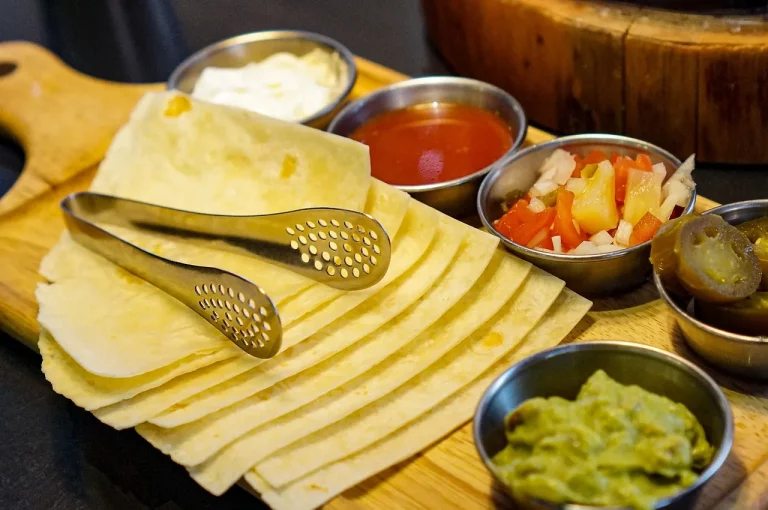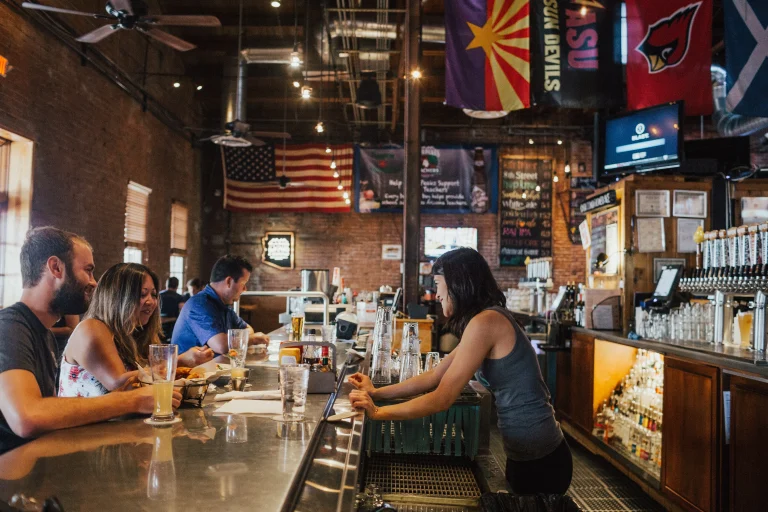The Rise Of Mexican Gangs In California
Mexican gangs have become a dominant force in the world of organized crime in California. If you’re short on time, here’s a quick answer to your question: Mexican gangs rose to prominence in California beginning in the 1980s and 1990s as crack cocaine became widely available and profitable to sell in inner cities. The Mexican Mafia prison gang and groups like MS-13 capitalized on this opportunity and used violence and intimidation to gain control of drug distribution.
The Origins of Mexican Gangs in California
The rise of Mexican gangs in California can be traced back to several key events and factors throughout history. Understanding the origins of these gangs is crucial in addressing the issues they present in society today.
The zoot suit riots of the 1940s
One significant event that contributed to the emergence of Mexican gangs in California was the zoot suit riots of the 1940s. These riots, fueled by racial tensions and prejudice, targeted Mexican American youths who wore flamboyant zoot suits.
The riots resulted in widespread violence and arrests, leading to a sense of marginalization and alienation among the Mexican American community. This sense of injustice and the desire for protection led to the formation of gangs as a means of self-defense and empowerment.
The Mexican Mafia prison gang
The Mexican Mafia, also known as “La Eme,” played a pivotal role in the development and expansion of Mexican gangs in California. Originally formed in the late 1950s within the California prison system, the Mexican Mafia established a hierarchical structure that exerted control over various street gangs.
This control extended beyond prison walls and allowed the Mexican Mafia to dictate criminal activities and maintain a stronghold over drug trafficking, extortion, and other illegal enterprises. The influence and power of the Mexican Mafia continue to shape the landscape of Mexican gangs in California to this day.
New immigrant populations in the 1980s
The influx of new immigrant populations, particularly in the 1980s, also contributed to the rise of Mexican gangs in California. Economic hardships and social challenges faced by these immigrants created an environment where gangs provided a sense of belonging and economic opportunities.
The lack of support systems and limited resources for integration further fueled the formation of gangs as a means of survival and adaptation. As a result, Mexican gangs gained strength and expanded their presence in various communities.
Understanding the origins of Mexican gangs in California requires a comprehensive examination of historical events, social dynamics, and systemic issues. It is only through this understanding that effective strategies can be developed to address the root causes and mitigate the impact of these gangs on individuals and communities.
The Rise of Crack Cocaine in the 1980s
The 1980s saw a significant rise in the popularity and availability of crack cocaine, a highly addictive form of the drug. This new form of cocaine emerged as a cheaper and more potent alternative to powdered cocaine, making it more accessible to a wider range of users.
The rise of crack cocaine had a profound impact on communities across the United States, particularly in California.
Crack as a profitable new drug
Crack cocaine quickly gained popularity in the 1980s due to its high potency and affordability. The drug was created by combining powdered cocaine with baking soda and water, resulting in a solid form that could be smoked rather than snorted.
This allowed for a more intense and immediate high, making crack highly addictive. Its affordability made it appealing to low-income individuals who could not afford the high prices of powdered cocaine. As a result, the demand for crack skyrocketed, leading to its widespread distribution and use.
Turf wars over drug distribution
The rise of crack cocaine in California led to intense turf wars among rival gangs vying for control of the lucrative drug trade. Gangs recognized the immense profitability of crack and sought to establish dominance over specific territories for distribution.
These turf wars often resulted in increased violence and crime rates within affected communities. The battles for control over drug distribution routes were not only fought among Mexican gangs but also involved other criminal organizations seeking to profit from the crack epidemic.
Gang control of the crack trade
Mexican gangs played a significant role in the distribution and control of the crack trade in California. These gangs leveraged their existing networks and connections to smuggle drugs into the state and establish distribution networks.
The profits from the crack trade allowed these gangs to expand their criminal activities and increase their influence and power within the community. Gang control of the crack trade not only perpetuated violence but also contributed to the overall instability and insecurity within affected neighborhoods.
For more information on the rise of Mexican gangs in California and the impact of crack cocaine, visit www.justice.gov.
Prominent Mexican Gangs Today
Sureños
The Sureños, also known as Sur 13 or Southern United Raza, are one of the most prominent Mexican gangs in California. They originated in the prison system and have since spread to various cities and neighborhoods.
The Sureños are affiliated with the Mexican Mafia, a powerful criminal organization that controls drug trafficking and other criminal activities.
The Sureños use distinctive tattoos, hand signs, and graffiti to identify themselves. They often wear blue clothing and accessories to show their allegiance. The gang has a hierarchical structure with shot-callers at the top making major decisions and enforcing their authority.
According to the California Department of Justice, the Sureños have been involved in a wide range of criminal activities, including drug trafficking, extortion, robbery, and murder. They have a significant presence in Southern California, particularly in Los Angeles and its surrounding areas.
Norteños
The Norteños, also known as Nuestra Familia, are another major Mexican gang in California. They originated in the prison system as a rival group to the Sureños and have a strong presence in the northern part of the state.
The Norteños are affiliated with the Nuestra Familia, a criminal organization involved in drug trafficking and other illegal activities.
Members of the Norteños often use the number 14 or the color red to represent their gang affiliation. They also have their own hand signs, tattoos, and graffiti. Like the Sureños, the Norteños have a hierarchical structure and are known for their involvement in violent crimes.
The Norteños and Sureños have been engaged in a long-standing rivalry, resulting in ongoing violence between the two groups. This rivalry has fueled a significant amount of gang activity in California, especially in areas where their territories overlap.
MS-13
While MS-13 originated in El Salvador, it has gained a strong foothold in California, particularly in the Los Angeles area. MS-13, also known as Mara Salvatrucha, is considered one of the most dangerous and violent gangs in the world.
The gang’s activities include drug trafficking, human smuggling, extortion, and murder. MS-13 has a reputation for extreme violence, often using machetes and other weapons to carry out their crimes. They are known for their distinctive tattoos, which often include the letters “MS” or the number 13.
MS-13 operates as a transnational gang, with connections to other MS-13 factions in Central America and across the United States. Their presence in California has led to increased violence and criminal activity in the communities they operate in.
18th Street Gang
The 18th Street Gang, also known as Barrio 18, is a Mexican-American street gang that originated in Los Angeles. It has since spread to other parts of California and the United States. The 18th Street Gang is known for its involvement in drug trafficking, robbery, and other criminal activities.
Members of the 18th Street Gang often identify themselves with tattoos, graffiti, and hand signs. They have a reputation for being highly territorial and engaging in violent confrontations with rival gangs.
The gang has a decentralized structure, with numerous cliques operating under the 18th Street umbrella.
According to law enforcement agencies, the 18th Street Gang has thousands of members across California. Their criminal activities have had a significant impact on the communities they operate in, leading to increased violence and drug-related crimes.
Criminal Activities
Mexican gangs in California are known for engaging in a wide range of criminal activities. These activities not only pose a significant threat to public safety but also have far-reaching consequences for society as a whole.
Here are some of the main criminal activities associated with Mexican gangs in California:
Drug trafficking
One of the primary sources of income for Mexican gangs in California is drug trafficking. These gangs smuggle and distribute large quantities of illegal drugs, such as cocaine, heroin, and methamphetamine, into the state.
They operate sophisticated networks that allow them to transport drugs across the border and distribute them throughout various cities and towns in California. Drug trafficking not only fuels addiction and drug-related crimes but also contributes to the overall deterioration of public health.
Extortion
Extortion is another common criminal activity carried out by Mexican gangs in California. These gangs often target business owners, particularly those operating in industries such as construction, agriculture, and retail.
Through threats and acts of violence, they force these individuals to pay protection money or face dire consequences. This form of extortion not only disrupts the local economy but also instills fear and undermines the sense of security within the community.
Human trafficking
Mexican gangs in California are also involved in human trafficking, a heinous crime that exploits vulnerable individuals for profit. These gangs smuggle people across the border, often under dangerous and inhumane conditions, and force them into various forms of labor or sexual exploitation.
Human trafficking not only violates basic human rights but also perpetuates a cycle of abuse and suffering.
Violence and intimidation
Violence and intimidation are integral components of Mexican gang culture in California. These gangs use violence as a means to establish control, settle disputes, and intimidate rival gangs or individuals who pose a threat to their operations.
The use of firearms, assault, and even murder are not uncommon within the gang’s activities. This atmosphere of violence not only endangers the lives of gang members but also innocent bystanders who may become caught in the crossfire.
According to a report by the California Department of Justice, Mexican gangs are responsible for a significant portion of the state’s overall crime rate. The report highlights the need for comprehensive strategies to combat gang-related activities and dismantle the criminal networks that support them.
Impact on Communities
Increased violence and homicide rates
The rise of Mexican gangs in California has had a significant impact on local communities, leading to increased violence and homicide rates. These gangs, such as the notorious MS-13, engage in various criminal activities ranging from drug trafficking to human smuggling.
According to a report by the Department of Justice, gang-related violence has been on the rise in California, with Mexican gangs being one of the primary contributors to this alarming trend. The consequences of this violence are devastating for residents who live in fear for their safety and well-being.
Recruitment of youth
One of the most concerning aspects of the rise of Mexican gangs in California is their ability to recruit vulnerable youth. These gangs often prey on disadvantaged communities, offering a sense of belonging and protection to young individuals who may be searching for identity or purpose.
The allure of money, power, and protection can be enticing for these young people, leading them down a dangerous path of criminal activity. Efforts to combat gang recruitment and provide alternative opportunities for at-risk youth are crucial in addressing this issue.
Fear and intimidation
The presence of Mexican gangs in California has created a climate of fear and intimidation within affected communities. Residents live in constant apprehension, afraid to speak out or report criminal activities due to the fear of retribution.
This fear further perpetuates the power and control of these gangs, allowing them to operate with impunity. It is essential for law enforcement agencies and community organizations to work together to create safe spaces and encourage residents to come forward with information without fear of retaliation.
Spillover across the U.S.-Mexico border
The impact of Mexican gangs in California extends beyond state borders, with spillover effects across the U.S.-Mexico border. The interconnected nature of criminal networks allows for the flow of drugs, weapons, and illicit activities between the two countries.
Strengthening border security and cooperation between law enforcement agencies in both countries is crucial in combating the influence and operations of these gangs. Initiatives such as Operation Joint Task Force – West have been successful in disrupting gang activities and reducing their impact on both sides of the border.
Conclusion
In conclusion, Mexican gangs have become deeply entrenched in California, particularly in poor, urban areas. Their rise to power can be traced to the introduction of crack cocaine as a lucrative illicit market, turf wars over drug distribution, and the steady growth of immigrant populations from Mexico. Today, groups like the Mexican Mafia, Sureños, Norteños, MS-13, and 18th Street Gang remain dominant forces spreading violence, fear, and criminal activity across California communities.








